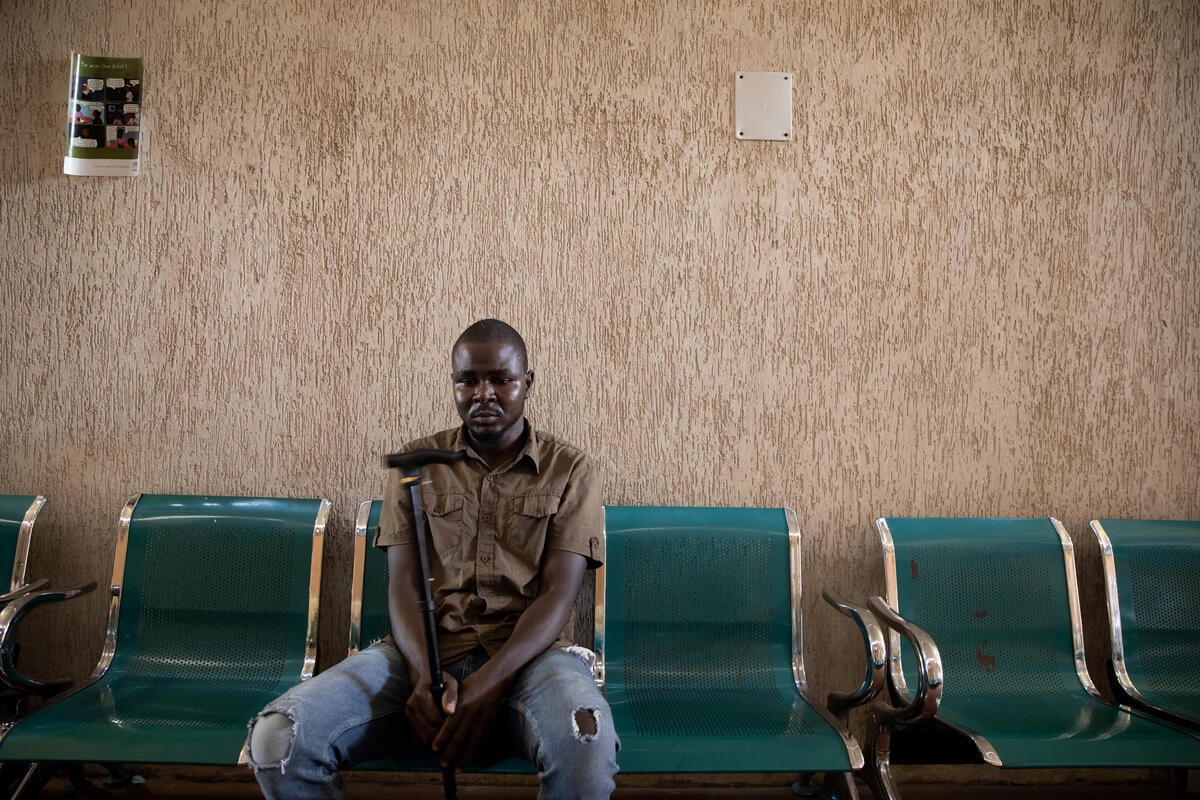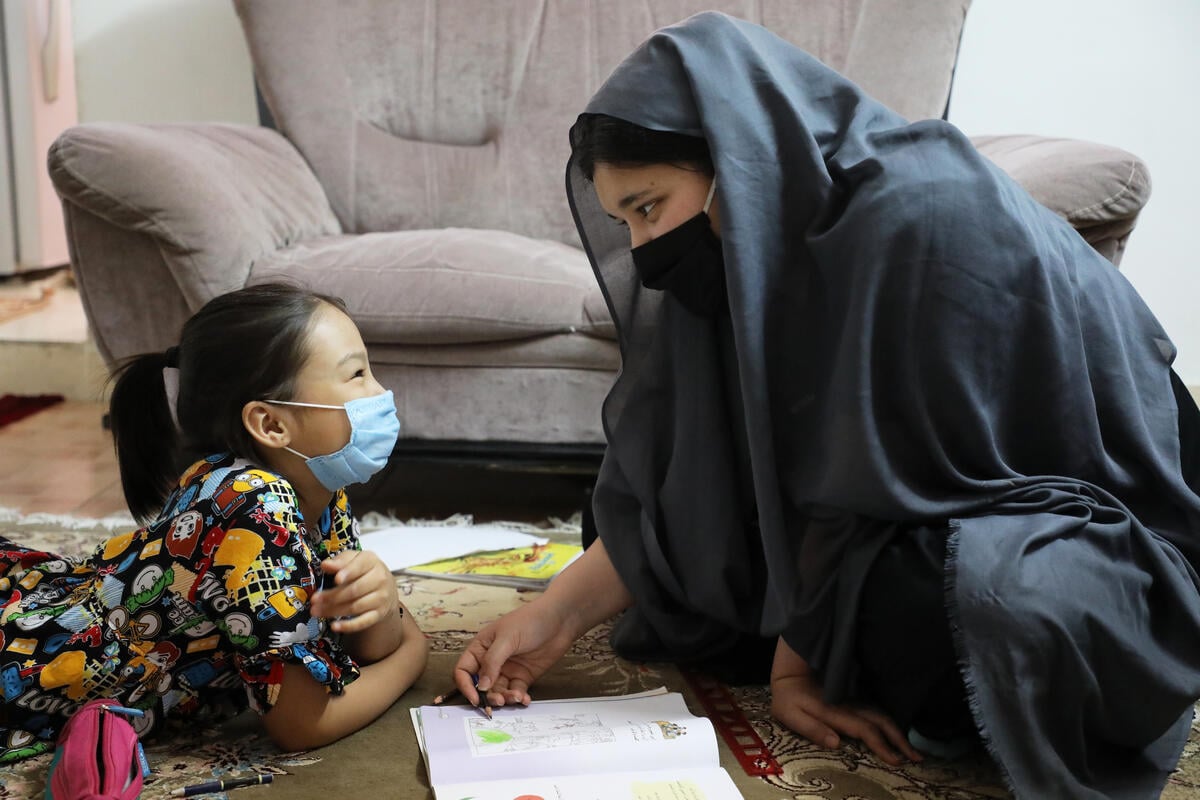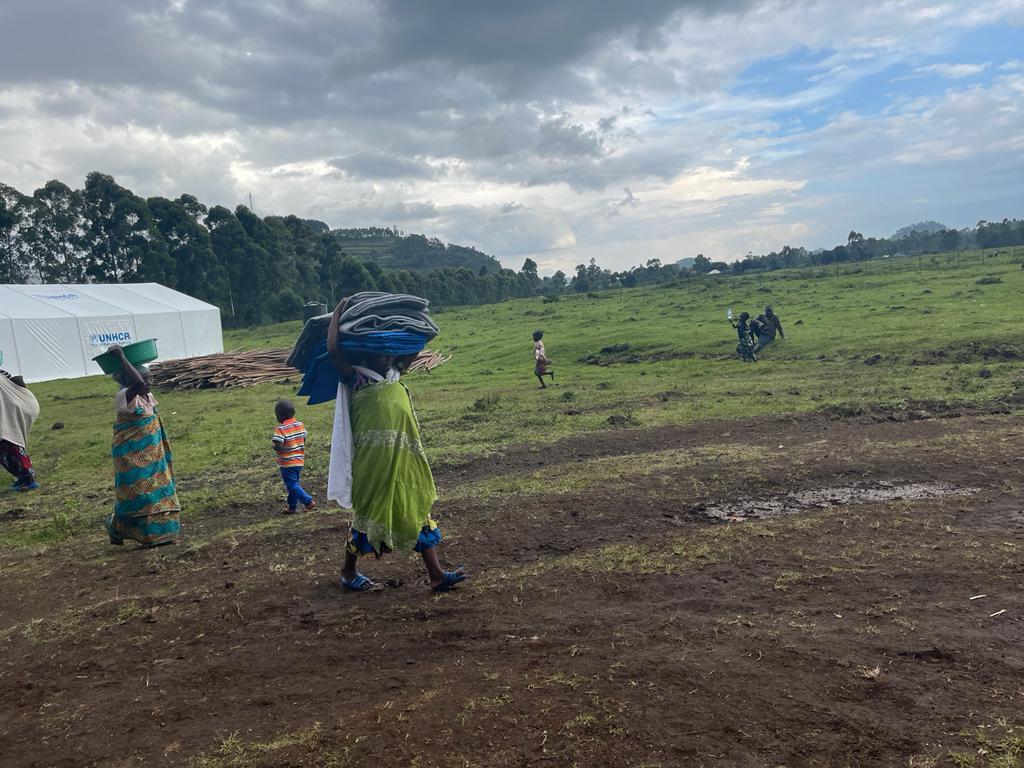Facing up to asylum in Ireland
Facing up to asylum in Ireland

DUBLIN, Ireland, July 6 (UNHCR) - Visitors to the Ilac Centre, one of Dublin's main public libraries, are showing great interest in a unique and eye-catching exhibition portraying the lives of asylum seekers in Ireland.
Photographer Howard Davies' pictorial testimony of the lives of asylum seekers in Ireland, including women and children, is called "Asyland" after the Irish Refugee Council's monthly publication for which the photographs were originally commissioned.
"The photographs are unmistakable," says Pat Guerin of the Irish Refugee Council. "They hit you when you walk by them. They appeal to you to understand what life is like for a refugee or an asylum seeker in a strange new country like Ireland."
He adds, "Ireland is probably not the worst country for the way it portrays asylum seekers, but there are a lot of negative examples. Images of long queues of asylum seekers are still being used in the Irish media both as file photos and film footage even though it's been many years since there have been long queues outside the Refugee Applications Centre in Dublin."
He notes that asylum seekers are inaccurately associated with criminality and disease, or described in terms of "floods" or "an influx", and that they are treated in pejorative terms by some politicians and sections of the media.
But he remains optimistic about the opportunities the exhibition presents to engage the Irish public. "Howard's images do a great job of explaining things," says Guerin. "He puts a human face on the statistics about asylum seekers. I hope the Asyland exhibition will go some way towards getting people to recognize that asylum seekers and refugees are just like us, they have hopes and fears. They are not two-headed monsters."
Describing his experience of Ireland, photographer Davies says, "Generally, my impression is that the situation for asylum seekers in Ireland is more sympathetic, but that is because the situation for those seeking asylum in the UK is so extreme. The demonizing and stigmatizing of asylum seekers in the UK by some tabloids has led to open attacks on asylum seekers and a climate where there is a generally negative perception of their plight."
He adds that many reports in the UK tabloids have been proven to be false, but even if there is a retraction, the damage is done - people just remember the headlines, like one about the asylum seekers eating the Royal swans, a story which like many others was later proved to be unfounded.
"On a more positive note," says Davies, "Ireland would seem to be caring reasonably well for asylum seekers in its direct provisions system, compared with the UK where asylum seekers are dispersed often to very poor accommodation. Also in Ireland, children are allowed to integrate in schools, whereas in the UK there are now proposals to have centres, basically like detention centres, where asylum seekers and their children would stay."
The photographer believes it is important to talk about asylum seekers in an effort to undo the damage caused by negative reporting. "I went to talk to a group of children as part of World Refugee Day events in the UK and to show them some photographs of asylum seekers and refugees. By the end of it, they said their opinions about asylum seekers had changed. They felt more sympathetic."
Davies has been working as a photojournalist for more than 15 years and has documented major refugee crises in Africa, Asia and the Balkans. He covered the Rwandan refugee crisis for three years in the mid-1990s. He has also been shortlisted for the Amnesty Photojournalism Award. In 2001, he founded Exile Images as a dedicated agency representing photojournalists covering issues as diverse as conflict, refugees, asylum in Europe, disasters, humanitarian relief, AIDS, and education in the developing world.
Looking back at his career, he says, "I have covered conflicts over the last 20 years. Many are not reported on. For instance the situation in the Congo, or in northern Uganda and the abuses by the Lord's Resistance Army which is causing displacement. Refugees do not easily leave their homes - people are leaving because of genuine fear, but there is a prevailing attitude in Europe that refugees are 'bogus'. Europe in many ways has an increasingly parochial view on the world. We only hear about conflicts briefly when they hit the headlines. This is a narrow view, a blinkered view."

Davies is motivated by the experiences of people he has seen suffer. He says, "Having been to Congo and places like it, I feel motivated by what I have seen. In the UK, for instance, it is stunning that the Home Office is turning down asylum applicants from Zimbabwe and trying to deport Zimbabweans too, when the Foreign Office clearly condemns the regime there and states that there are widespread human rights abuses happening there. It's a world gone crazy."
The "Asyland" exhibition at Dublin's Ilac Centre ends on July 8. It will move to the Central Library in Cork, Ireland's second largest city, in the last week of August and the first two weeks of September.
By Steven O'Brien
UNHCR Ireland








